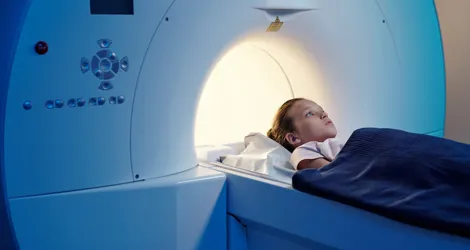Overview
Cervical cancer starts in the cells of the cervix. Most cases are caused by HPV (human papillomavirus) infections. Regular Pap tests and safe sex can help lower your risk. Treatment usually includes surgery, radiation, and chemotherapy.
What is Cervical Cancer?
Cervical cancer is a type of cancer that starts on the surface of the cervix, which is the lower part of the uterus. It begins when normal cells in the cervix change into precancerous ones. Nearly all cases of cervical cancer are linked to HPV, a common virus spread through sexual contact. Getting regular screenings like Pap smears and receiving the HPV vaccine can greatly lower the risk of developing cervical cancer.
This cancer often doesn’t show symptoms right away, which is why early screening is so important. When found early, cervical cancer is highly treatable with options like surgery, radiation, chemotherapy, or other medications. Each year, around 14,000 people in the U.S. are diagnosed with cervical cancer, with women aged 35 to 44 being the most affected.
Types of Cervical Cancer
Cervical cancer can start in different types of cells in the cervix, and the type of cancer is named based on where it begins. Knowing the type helps doctors decide on the best treatment plan. The two main types of cervical cancer are squamous cell carcinoma and adenocarcinoma.
-
Squamous cell carcinoma:
Squamous cell carcinoma is the most common type, making up about 90% of all cervical cancer cases. It starts in the thin, flat cells that cover the outer part of the cervix, known as the ectocervix. -
Adenocarcinoma:
Adenocarcinoma begins in the glandular cells that line the inside of the cervix, called the endocervix. A rare form of this type is known as clear-cell adenocarcinoma, also called clear-cell carcinoma or mesonephroma.
Risk Factors
Cervical cancer is mainly caused by HPV, but several other factors can increase your risk of developing the disease. These factors can affect how your body responds to an HPV infection and whether it clears or develops into cancer.
-
Smoking Tobacco:
Smoking weakens the immune system, making it harder to fight off HPV. In people who smoke, HPV infections are more likely to last longer and less likely to clear, which raises the risk of cervical cancer. -
Multiple Sexual Partners:
The risk of getting HPV increases with the number of sexual partners you have. If your partner has had many sexual partners, that also raises your chances of being exposed to HPV. -
Early Sexual Activity:
Having sex at a young age increases the chance of HPV infection. The cervix is more vulnerable during the teenage years, making early sexual activity a risk factor for cervical cancer. -
Other Sexually Transmitted Infections (STIs):
Having STIs like herpes, chlamydia, gonorrhea, syphilis, or HIV/AIDS raises the risk of cervical cancer. These infections can make it easier for HPV to cause lasting damage. -
A Weakened Immune System:
If your immune system is weakened by a health condition or medical treatment, your body may not be able to clear HPV. This increases the chances that an HPV infection will lead to cervical cancer. -
Exposure to DES (Diethylstilbestrol):
If your mother took DES during pregnancy in the 1950s to prevent miscarriage, your risk of cervical cancer may be higher. This drug is linked to a rare form of the disease called clear-cell adenocarcinoma.




















